BLOG
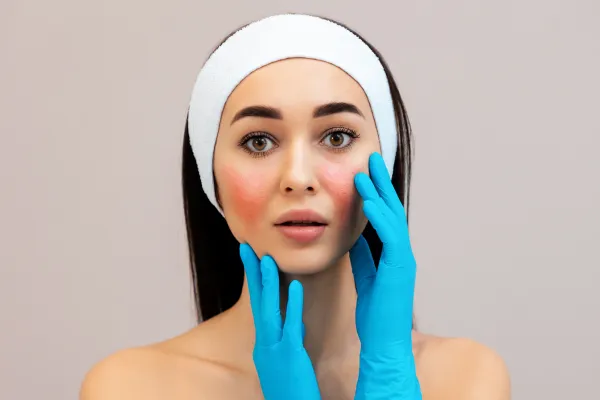
Top 10 Common Skin Care Conditions and How to Treat Them
Welcome to our skincare sanctuary! Whether you're a seasoned beauty aficionado or a novice embarking on your skincare journey, navigating the vast world of skin conditions can often feel overwhelming. From pesky pimples to relentless rosacea, each skin ailment brings its own set of challenges and questions.
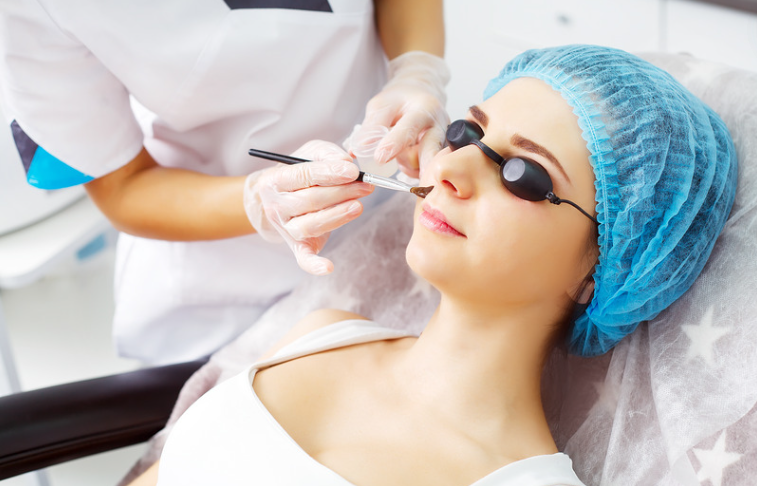
Image by Iurii Maksymiv on Canva.com
But fear not! In this comprehensive guide, we will unravel the mysteries behind the top 10 most common skincare conditions and arm you with effective treatments to tackle them head-on. Goodbye to conjecture and welcome to radiant, wholesome skin.
Ready to transform your skincare routine? Let’s dive in!
1. Acne: Causes and Effective Treatments
Acne is one of the most prevalent skin conditions, affecting people of all ages. It happens when dead skin cells and oil clog hair follicles, causing pimples, blackheads, and whiteheads to appear. Acne can be caused by hormonal fluctuations, heredity, and some drugs.
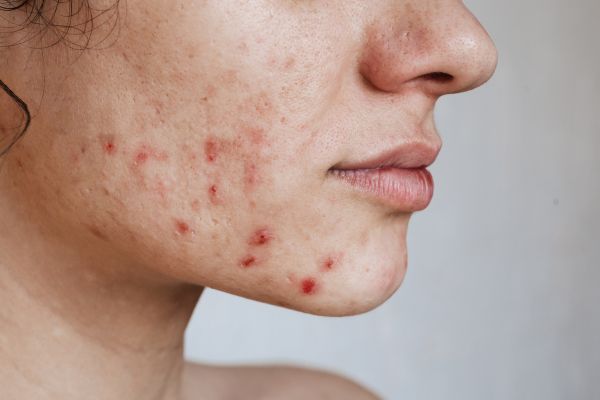
Image by Anastasia Korchagina on Canva.com
Effective Treatments:
Topical Treatments: Over-the-counter products containing benzoyl peroxide, salicylic acid, or retinoids can help unclog pores and reduce inflammation.
Oral Medications: For more severe cases, dermatologists may prescribe oral antibiotics or hormonal treatments to control acne.
Lifestyle Changes: Maintaining a healthy diet, reducing stress, and following a consistent skincare routine can also help manage acne.
Additional Tips:
Regular Cleaning: Use a mild cleanser to wash your face twice a day.
Non-Comedogenic Products: Use makeup and skincare products labeled non-comedogenic to avoid clogging pores.
Avoid Picking: Resist the urge to pick or squeeze pimples to prevent scarring.
Acne can be a persistent problem, but with patience and the right approach, you can achieve clearer skin. It’s essential to stick to your routine and consult with an aesthetician for tailored advice. In severe acne cases that won't respond to skincare treatments you will need to see a dermatologist for possible antibiotic prescription.
2. Eczema: Understanding Triggers and Soothing Remedies
The chronic skin ailment known as eczema, sometimes known as atopic dermatitis, is typified by dry, itchy, and inflammatory skin. It often flares up due to various triggers such as allergens, irritants, and stress.
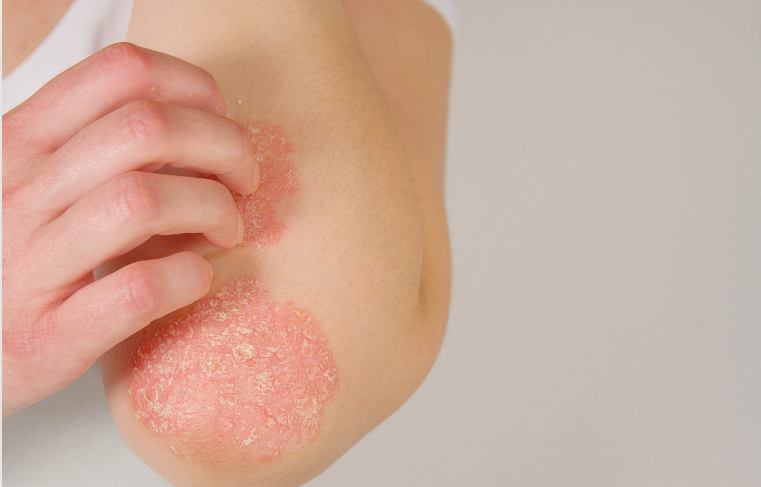
Image by helivideo on Canva.com
Soothing Remedies:
Moisturize Regularly: Use fragrance-free, hypoallergenic moisturizers to keep your skin hydrated and prevent dryness.
Identify Triggers: Keep a diary to track potential triggers and avoid them whenever possible.
Medications: Topical corticosteroids and oral antihistamines can help reduce inflammation and itchiness during flare-ups.
Additional Tips:
Cool Baths: Take lukewarm baths and add colloidal oatmeal or baking soda to soothe the skin.
Soft Fabrics: Wear soft, breathable fabrics like cotton to reduce irritation.
Humidifiers: Use a humidifier in dry environments to maintain skin moisture.
Managing eczema involves a proactive approach to skincare and lifestyle adjustments. With the right strategies, you can reduce flare-ups and enjoy healthier skin.
3. Psoriasis: Symptoms, Types, and Management Strategies
Psoriasis is an autoimmune condition that results in the rapid buildup of skin cells, leading to thick, red, and scaly patches. It can be categorized into several types, including plaque psoriasis, guttate psoriasis, and pustular psoriasis.
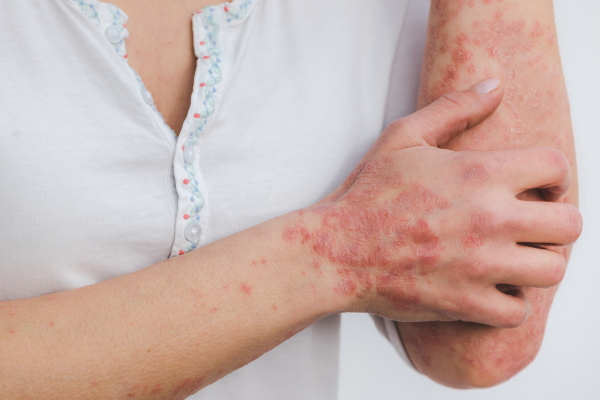
Image by Miller_Eszter on Canva.com
Management Strategies:
Topical Treatments: Corticosteroids, vitamin D analogs, and coal tar can help reduce inflammation and slow down skin cell production.
Phototherapy: Exposure to ultraviolet light under medical supervision can help manage symptoms.
Systemic Medications: In severe cases, oral or injectable medications that target the immune system may be prescribed.
Additional Tips:
Moisturize: Regularly apply thick, emollient moisturizers to keep skin hydrated.
Avoid Triggers: Identify and avoid triggers like stress, smoking, and certain medications.
Healthy Lifestyle: Maintain a healthy diet and weight to help reduce flare-ups.
Living with psoriasis requires a comprehensive approach that includes medical treatments and lifestyle changes. By working closely with a healthcare provider, you can find the best strategy to manage your symptoms.
4. Rosacea: Identifying and Reducing Flare-Ups
Rosacea is a long-term skin disorder that results in redness, visible blood vessels, and occasionally pimples on the face that resemble acne. Triggers can include sun exposure, spicy foods, alcohol, and stress.
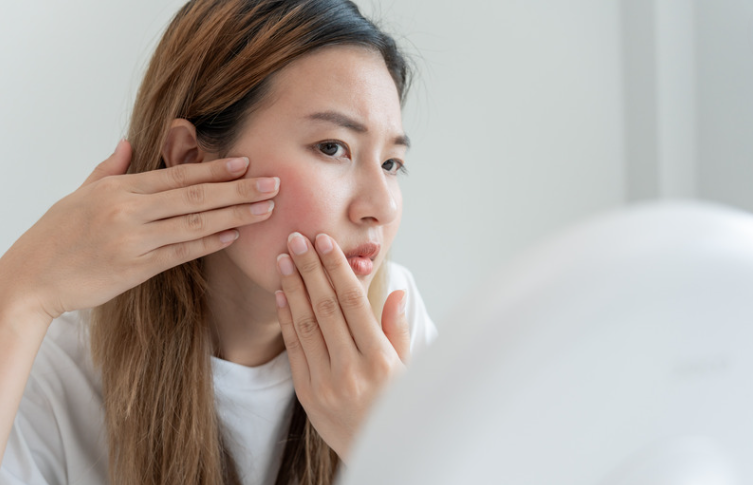
Image by shisuka on Canva.com
Reducing Flare-Ups:
Sun Protection: Use a broad-spectrum sunscreen with an SPF of 30 or higher daily to protect your skin from UV rays.
Gentle Skincare: Opt for gentle, fragrance-free skincare products to avoid irritating your skin.
Avoid Triggers: Identify and avoid personal triggers to minimize flare-ups.
Additional Tips:
Cold Compresses: Apply cold compresses to reduce redness and soothe the skin.
Green-Tinted Moisturizers: Use green-tinted makeup products to neutralize redness.
Regular Dermatologist Visits: Regular check-ups with a dermatologist can help manage the condition effectively.
Managing rosacea involves understanding your triggers and adopting a skincare routine that minimizes irritation. With the right care, you can keep flare-ups under control and maintain a clearer complexion.
5. Melasma: Causes and Treatment Options to Manage Symptoms
A common skin disease known as melasma, or the "mask of pregnancy," is characterized by dark, discolored spots on the face. Although it’s not harmful, it can be a source of frustration for many. It is important to understand that melasma is a persistent skin condition that can be difficult to eliminate entirely and often recurs even after treatment.
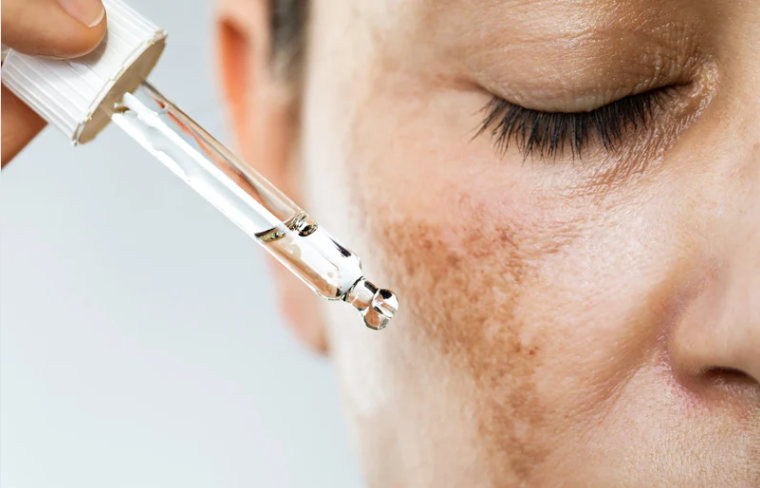
Image by simarik on Canva.com
Causes:
Hormonal Changes: Particularly during pregnancy or while using birth control pills, can stimulate melanin production, leading to dark patches.
Sun Exposure: A significant contributor, as UV light can exacerbate melasma by increasing melanin synthesis.
Genetic Predisposition: If your parents had melasma, you might be more likely to develop it too.
Treatment Options:
Preventive Measures: Daily use of broad-spectrum sunscreen with an SPF of at least 30, wearing protective clothing, and avoiding peak sun hours.
Topical Treatments: Hydroquinone, retinoids, and azelaic acid to lighten hyperpigmented areas.
Advanced Treatments: Chemical peels, laser therapy, and microneedling for more immediate and pronounced results.
Additional Tips:
Regular Dermatologist Visits: Regular consultations can help monitor the condition and adjust treatments as needed.
Consistent Skincare Routine: Stick to a consistent routine to manage and prevent further pigmentation.
Treating melasma often requires a combination of preventive measures and targeted treatments. Consistency and protection from sun exposure are key to managing this condition effectively.
6. Alopecia Areata: Managing and Acknowledging Hair Loss
Alopecia areata is characterized by patchy hair loss, which can affect the scalp and other parts of the body. It is an autoimmune condition where the immune system attacks hair follicles.
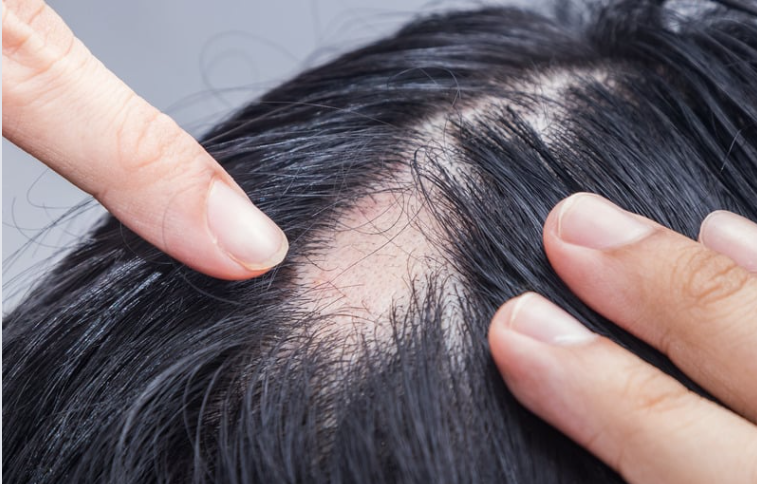
Image by gopfaster on Canva.com
Causes:
Genetic Predisposition: Family history can increase the risk.
Stress: Symptoms can be brought on by or made worse by emotional or physical stress.
Infections or Illness: Certain infections or underlying health issues can prompt the immune system to attack hair follicles.
Treatment Options:
Topical Corticosteroids: Applied directly to the affected area to reduce inflammation and encourage hair growth.
Minoxidil (Rogaine): Stimulates hair follicles.
Immunotherapy: Provokes an allergic reaction to restart hair growth.
Corticosteroid Injections: Injected into bald patches.
Platelet-Rich Plasma (PRP) Therapy: Injects concentrated platelets from the patient's own blood into the scalp.
Coping Strategies:
Stress-reduction methods: include yoga, meditation, and physical activity.
Support Groups: Connecting with others experiencing similar challenges.
Wigs and Head Coverings: Wearing wigs, hats, or scarves for confidence.
Healthy Diet: A balanced diet rich in vitamins and minerals can support overall health and potentially improve hair growth.
Coping with alopecia areata involves a combination of medical treatments and emotional support. Finding a supportive community and focusing on overall health can make a significant difference.
7. Seborrheic Dermatitis: Causes and Management
Commonly affecting the scalp, seborrheic dermatitis causes red, scaly, itchy spots on the skin. It can also appear on other oily areas of the body, such as the face and chest.
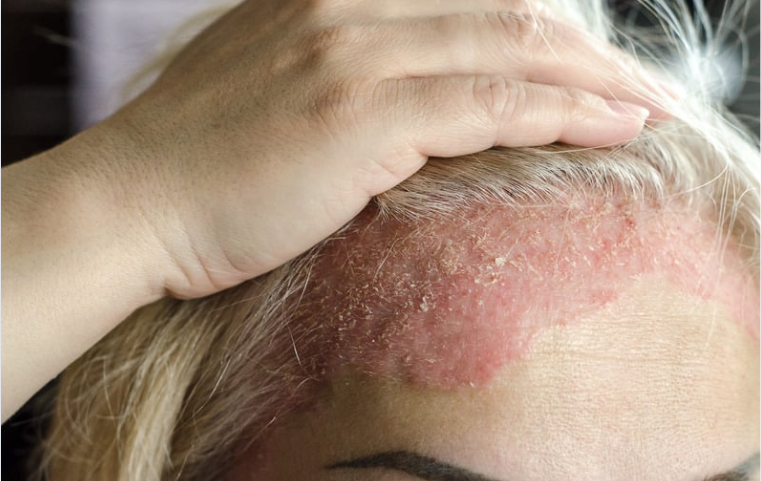
Image by Egor Kulinich on Canva.com
Causes:
Yeast Overgrowth: The presence of a yeast called Malassezia on the skin can contribute to seborrheic dermatitis.
Genetics: Family history can play a role.
Weather: Cold, dry weather can exacerbate symptoms.
Management Strategies:
Medicated Shampoos: Use shampoos containing ketoconazole, selenium sulfide, or zinc pyrithione.
Topical Treatments: Apply antifungal creams or corticosteroids to affected areas.
Regular Cleaning: Wash affected areas regularly with gentle, non-irritating cleansers.
Additional Tips:
Avoid Harsh Products: Steer clear of harsh soaps and skincare products.
Stress Reduction: Manage stress to help reduce flare-ups.
Moisturize: To avoid dryness and irritation, keep your skin hydrated.
Managing seborrheic dermatitis involves consistent care and avoiding triggers that can worsen the condition. With the right approach, you can keep symptoms under control.
8. Hives (Urticaria): Causes and Relief Strategies
Hives, or urticaria, are red, itchy welts that can appear on the skin as a result of an allergic reaction, stress, or other triggers.
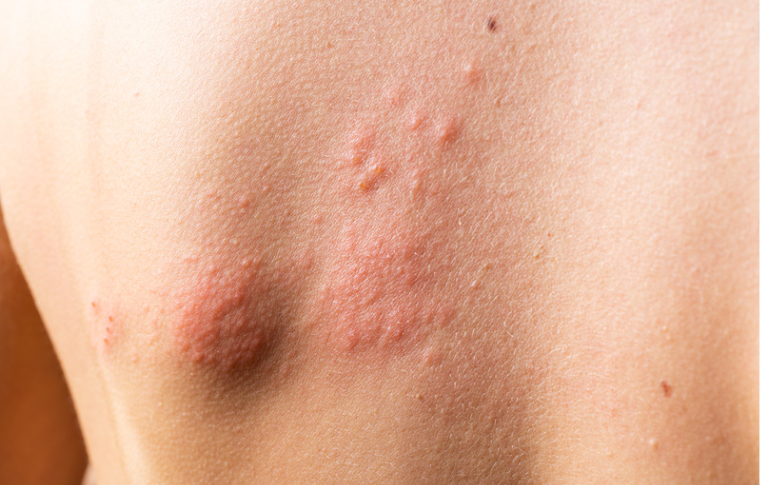
Image by Alex on Canva.com
Causes:
Allergens: Foods, medications, insect bites, or other allergens.
Infections: Viral or bacterial infections.
Stress: Humira may occur or intensify due to emotional stress.
Relief Strategies:
Antihistamines: Antihistamines available over-the-counter can help lessen swelling and irritation.
Cool Compresses: Apply cool compresses to the affected area to soothe the skin.
Avoid Triggers: Identify and avoid triggers whenever possible.
Additional Tips:
Loose Clothing: Wear loose, comfortable clothing to avoid irritating the skin.
Hydration: Keep the skin hydrated to prevent dryness and itching.
Oatmeal Baths: Taking oatmeal baths can help soothe the skin and reduce itching.
Managing hives involves a combination of avoiding triggers and using treatments to alleviate symptoms. With the right care, you can reduce the frequency and severity of outbreaks.
9. Contact Dermatitis: Causes, Prevention, and Treatment
When the skin comes into contact with an irritant or allergen, it can become inflamed and develop contact dermatitis. Skin that is red, itchy, and occasionally blistering is the outcome.
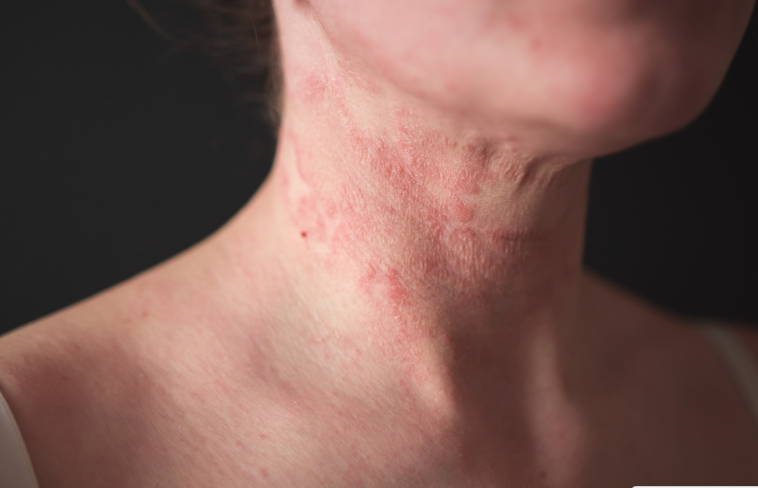
Image by Dmitriy SIMAKOV on Canva.com
Causes:
Irritants: Soaps, detergents, solvents, or other chemicals.
Allergens: Poison ivy, nickel, latex, and certain fragrances.
Occupational Exposure: Repeated exposure to irritants at work.
Prevention and Management:
Identify and Avoid Triggers: Determine the cause of the dermatitis and avoid contact.
Topical Steroids: Apply corticosteroid creams to reduce inflammation and itching.
Moisturizers: Use hypoallergenic moisturizers to soothe and protect the skin.
Additional Tips:
Protective Gear: Wear gloves or protective clothing when handling potential irritants.
Gentle Cleansers: Use gentle, fragrance-free cleansers and moisturizers.
Patch Testing: Consider patch testing to identify specific allergens and avoid them.
Preventing and managing contact dermatitis involves identifying and avoiding triggers, using appropriate treatments, and maintaining a gentle skincare routine. By taking these steps, you can reduce the risk of flare-ups and protect your skin.
10. Vitiligo: Understanding and Coping with Skin Depigmentation
White patches appear on different sections of the body due to vitiligo, a disorder where the skin loses its pigment cells. While it is not harmful, it can affect a person’s appearance and self-esteem.
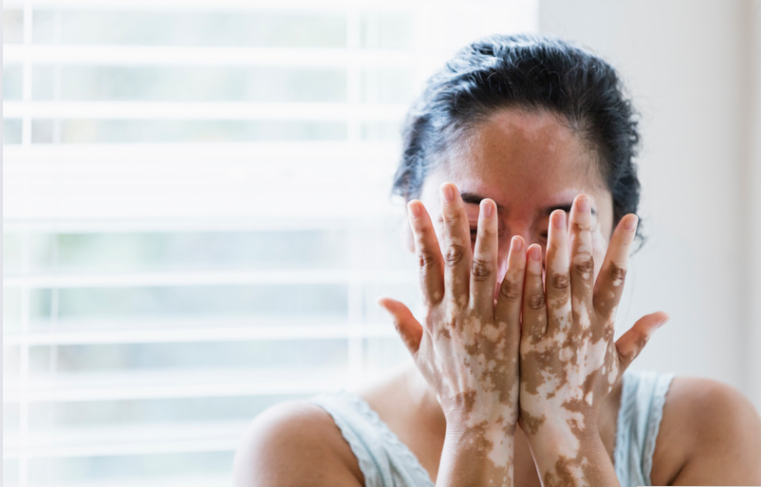
Image by kali9 on Canva.com
Causes:
Autoimmune Response: The immune system attacks and destroys melanocytes, the cells responsible for skin pigmentation.
Genetics: An increased risk may result from a family history of vitiligo or other autoimmune illnesses.
Environmental Factors: Certain environmental factors might trigger the onset of vitiligo.
Management and Coping Strategies:
Topical Treatments: Corticosteroids and calcineurin inhibitors can help restore some pigment in affected areas.
Phototherapy: Light therapy can stimulate repigmentation in some cases, especially when combined with topical treatments.
Camouflage: Use makeup or self-tanning products to cover depigmented areas and improve cosmetic appearance.
Additional Tips:
Sun Protection: Apply sunscreen regularly to protect depigmented areas from sunburn and further discoloration.
Healthy Diet: Maintain a balanced diet to support overall skin health and possibly help manage the condition.
Support Groups: Joining support groups or counseling can provide emotional support and coping strategies.
Living with vitiligo can be challenging, but with appropriate treatments and coping strategies, you can manage the condition effectively and maintain a positive outlook.
Navigating the world of skincare can be daunting, especially when faced with common conditions that affect our skin’s health and appearance. Understanding these conditions, from acne and eczema to vitiligo, is the first step toward effective management and treatment. By adopting the right skincare practices, seeking appropriate medical advice, and making lifestyle adjustments, you can address these issues and achieve healthier, more radiant skin.
Remember, each person's skin is unique, and what works for one individual might not work for another. It's essential to tailor your skincare routine to your specific needs and consult with dermatologists or skincare professionals for personalized advice. Embrace your journey to clear, glowing skin with confidence and patience!
Feel free to reach out for more tips or professional guidance tailored to your skin's unique needs. Here's to your healthiest skin yet!
Start Here
Copyright © SkillyLily 2023. All right reserved

